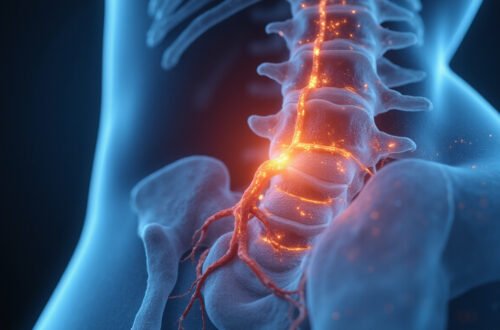Back pain is a common complaint affecting millions of people worldwide, often caused by conditions like herniated discs, sciatica, or spinal stenosis. If you’ve been struggling with persistent discomfort, you might have heard about spinal decompression as an effective treatment option. Spinal decompression offers a non-surgical way to relieve back pain by gently stretching the spine to reduce pressure on spinal discs and nerves. In this article, we’ll explore the top benefits of spinal decompression and explain how it works to bring fast relief from back pain.
What Is Spinal Decompression?
Spinal decompression is a therapeutic technique designed to alleviate pressure on compressed spinal nerves and discs. This treatment can be performed surgically or non-surgically, but non-surgical spinal decompression is more common as it is non-invasive and easier to undergo. It uses controlled mechanical traction or manual methods to gently stretch the spine, allowing herniated or bulging discs to retract, promoting better flow of oxygen, water, and nutrients to the affected area. This process helps in healing damaged discs and reducing inflammation.
How Spinal Decompression Relieves Back Pain Fast
The primary source of back pain is often nerve compression caused by spinal disc problems or degenerative changes. When spinal nerves are pinched, symptoms such as sharp or burning pain, numbness, and weakness can occur. Spinal decompression relieves back pain by:
- Reducing Pressure on Spinal Discs: Stretching the spine creates negative pressure inside the discs, encouraging bulging or herniated material to move back into place.
- Increasing Space Between Vertebrae: This decompresses nerve roots, easing the irritation and inflammation that cause pain.
- Improving Circulation and Nutrient Flow: Enhanced movement promotes better blood supply and nutrient delivery to the spinal structures, speeding up natural healing.
- Relaxing Muscle Spasms: Decompression can reduce muscle tightness that often arises from nerve irritation, further decreasing discomfort.
By addressing the root causes of back pain, spinal decompression offers fast, effective relief without the risks associated with surgery or heavy medications.
Top Benefits of Spinal Decompression Therapy
Many patients have reported significant improvements after spinal decompression therapy sessions. Here are the key benefits that make this treatment a preferred choice for back pain relief:
1. Non-Invasive and Safe
Unlike surgical interventions, spinal decompression therapy does not require incisions or anesthesia, reducing the risk of complications such as infections or prolonged recovery. It’s a safe option for many individuals, including those who are not candidates for surgery.
2. Effective for Various Conditions
Spinal decompression can effectively treat conditions like herniated or bulging discs, sciatica, degenerative disc disease, and spinal stenosis. It targets multiple causes of back pain by improving spinal alignment and reducing nerve compression.
3. Long-lasting Pain Relief
By promoting the natural healing of spinal structures, spinal decompression provides more durable relief compared to methods that only mask pain. Many patients experience significant improvement that lasts well beyond the treatment period.
4. Enhances Mobility and Quality of Life
Reducing back pain allows patients to return to daily activities, exercise, and work without discomfort. Improved mobility supports overall wellness and mental health.
5. Customizable Treatment Plans
Treatment sessions can be tailored to each individual’s specific condition, ensuring precise targeting of problem areas and maximizing results.
What to Expect During Spinal Decompression Therapy
Typical spinal decompression therapy involves several sessions over a few weeks. Here is a general overview of the process:
- Initial Assessment: A thorough examination, including imaging like MRI or X-rays, helps identify the exact cause and location of nerve compression.
- Session Setup: The patient lies on a motorized traction table, which is equipped to gently stretch the spine.
- Treatment Delivery: The table applies controlled tension and relaxation cycles to elongate the spine. Most sessions last about 30-45 minutes.
- Monitoring and Adjustment: Therapists monitor patient response and adjust settings accordingly for comfort and effectiveness.
Patients usually feel a gentle stretching sensation and may experience improvement in symptoms after a few treatments.

Who Is a Good Candidate for Spinal Decompression?
While spinal decompression is beneficial for many with chronic or acute back pain, candidates should consult their healthcare provider to determine suitability. It is particularly recommended for individuals who:
- Have herniated, bulging, or degenerative discs.
- Experience sciatica or radiating leg pain caused by nerve compression.
- Wish to avoid surgery or are not ideal surgical candidates.
- Want a drug-free pain management option.
Those with fractures, tumors, infections, or severe osteoporosis may not be suitable candidates and should discuss alternative treatments with their doctor.
Spinal Decompression vs. Other Back Pain Treatments
There are various treatments available for back pain, including physical therapy, chiropractic adjustments, medications, and surgery. Compared to these options, spinal decompression offers unique advantages:
| Treatment | Invasiveness | Targeting Nerve Compression | Duration of Pain Relief | Risk Profile |
|---|---|---|---|---|
| Spinal Decompression | Non-invasive | High | Long-lasting | Low |
| Surgery | Invasive | High | Long-lasting | Higher (infection, anesthesia risks) |
| Physical Therapy | Non-invasive | Moderate | Varies | Low |
| Medications | Non-invasive | Low | Temporary | Side effects possible |
This comparison emphasizes why spinal decompression is increasingly favored as a first-line or adjunct treatment to relieve back pain swiftly and safely.
Frequently Asked Questions about Spinal Decompression
Q1: How quickly can I expect relief from back pain after spinal decompression?
Most patients notice improvement within 2 to 4 weeks of regular therapy sessions, although some may feel relief sooner depending on the severity of their condition.
Q2: Is spinal decompression painful?
The therapy is generally painless and many patients find the stretching sensation relaxing. Any discomfort can be managed by adjusting the treatment settings.
Q3: Can spinal decompression help with sciatica-related pain?
Yes, spinal decompression is particularly effective for sciatica caused by herniated discs or nerve root pressure. It helps relieve nerve irritation that triggers sciatica symptoms.
Expert Insight: Supporting Research on Spinal Decompression
According to a study published by the Journal of Neurosurgery: Spine, non-surgical spinal decompression therapy showed significant improvement in patients with chronic low back pain caused by herniated discs or degenerative disc disease (source). This underscores its growing acceptance in the medical community as a viable and effective treatment.
Take the Next Step Towards Back Pain Relief
If chronic back pain has limited your daily activities and quality of life, spinal decompression therapy can provide a non-surgical solution that addresses the root cause. With its proven benefits, minimal risks, and fast-acting relief, this treatment might be the key to regaining comfort and mobility. Consult with a qualified healthcare professional today to learn if spinal decompression is right for you and start your journey toward a healthier, pain-free back.
For more information and personalized guidance on spinal decompression therapy, schedule an appointment with your spine specialist or physical therapist today. Don’t let back pain hold you back any longer!





